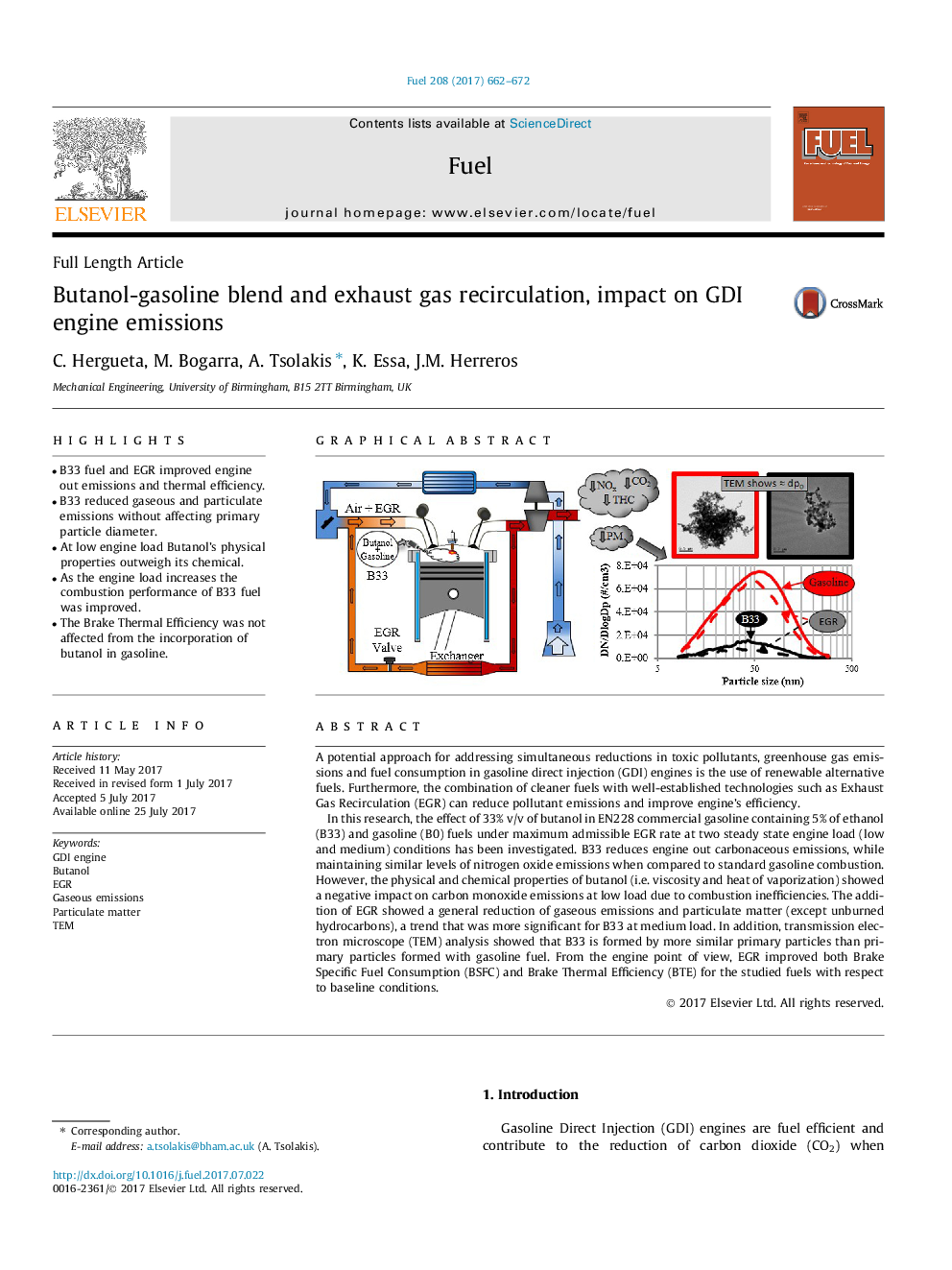| کد مقاله | کد نشریه | سال انتشار | مقاله انگلیسی | نسخه تمام متن |
|---|---|---|---|---|
| 6474220 | 1424956 | 2017 | 11 صفحه PDF | دانلود رایگان |

- B33 fuel and EGR improved engine out emissions and thermal efficiency.
- B33 reduced gaseous and particulate emissions without affecting primary particle diameter.
- At low engine load Butanol's physical properties outweigh its chemical.
- As the engine load increases the combustion performance of B33 fuel was improved.
- The Brake Thermal Efficiency was not affected from the incorporation of butanol in gasoline.
A potential approach for addressing simultaneous reductions in toxic pollutants, greenhouse gas emissions and fuel consumption in gasoline direct injection (GDI) engines is the use of renewable alternative fuels. Furthermore, the combination of cleaner fuels with well-established technologies such as Exhaust Gas Recirculation (EGR) can reduce pollutant emissions and improve engine's efficiency.In this research, the effect of 33% v/v of butanol in EN228 commercial gasoline containing 5% of ethanol (B33) and gasoline (B0) fuels under maximum admissible EGR rate at two steady state engine load (low and medium) conditions has been investigated. B33 reduces engine out carbonaceous emissions, while maintaining similar levels of nitrogen oxide emissions when compared to standard gasoline combustion. However, the physical and chemical properties of butanol (i.e. viscosity and heat of vaporization) showed a negative impact on carbon monoxide emissions at low load due to combustion inefficiencies. The addition of EGR showed a general reduction of gaseous emissions and particulate matter (except unburned hydrocarbons), a trend that was more significant for B33 at medium load. In addition, transmission electron microscope (TEM) analysis showed that B33 is formed by more similar primary particles than primary particles formed with gasoline fuel. From the engine point of view, EGR improved both Brake Specific Fuel Consumption (BSFC) and Brake Thermal Efficiency (BTE) for the studied fuels with respect to baseline conditions.
124
Journal: Fuel - Volume 208, 15 November 2017, Pages 662-672